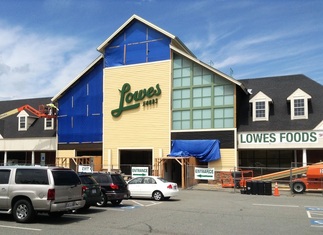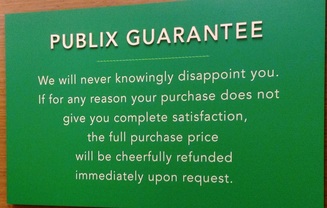
Have you ever thought about the difference between price selling and selling price?
Price selling is discounting. It’s lazy marketing. And having sale after sale after sale not only takes a bite out of profit but could be a long-term trap (just ask J.C. Penney).
Selling price is price-as-product.
An intriguing example of price-as-product popped up on my screen this morning: Greentoe.com. Their ad snagged me because I’ve been fishing around online for cameras and lenses. So I clicked through to their site, where they immediately offered “the lowest prices available” on brands like Nikon, Canon, Olympus, etc.
“People like you are saving big on photo gear,” claimed the big green headline (the shade of money). “Set your price and save up to 20%. Brand new products. No grey market. Authorized retailers. USA warranty included.”
Does the advent of Greentoe.com mean I’ll no longer have to contend with my local Best Buy’s lackluster camera department? (http://tinyurl.com/nywuxcx) Does it mean I won’t have to risk ordering my next camera from one of those slippery big city camera discounters?
Maybe …
“Greentoe.com is the first and only website that allows you to name your own price for products in five categories: photography, appliances, musical instruments, baby items, and home theater,” reports shopsmart.org, an online Consumer Reports “best deals” resource. They’re doing for consumer products what priceline.com has done for air travel and booking hotel rooms. And it has the same sort of intrigue. Will they accept my bid? Will it be soooo much lower than the price somebody else paid?
Greentoe’s process is simple:
(1) Submit an offer, on “thousands of products” (and give them your payment info).
(2) “Hundreds of retailers” then are notified of your offer (a green, orange or yellow gauge helps you determine how likely they are to accept – similar to Priceline).
(3) The first retailer to accept gets the sale; the transaction is between buyer and seller.
If you know precisely what item you want, Greentoe.com may be your cup of tea – that is, if their retail partners have what you’re looking for. The site’s selection of musical instruments and pro audio equipment is far from comprehensive, but it’s not meant to be. They know that brick-and-mortar stores always have aged merchandise or overstocks they need to sell, so greentoe.com matches them up with customers who live hundreds or thousands of miles away. Same for TVs, appliances and other products.
Their customers don’t have to be lucky or do the legwork, the company states in its well written and informative blog, they “just have to have a little luck to find that deal.” Greentoe provides the luck.
There is something else. Once you’ve punched in your payment card numbers, there’s no turning back, so if you’re at all queasy about things like that – or don’t make purchase decisions easily (like me), it might be best to buy elsewhere.
Heretofore, the place I most likely would have picked to buy a camera is New York’s B&H Photo-Video, especially if I needed help choosing the right one. B&H has it all: vast selection, attentive service, technical expertise, free advice and competitive prices. And, if you live anywhere nearby or are visiting Manhattan, you get to handle the goods before making a purchase decision. Walking into their 70,000 square foot their store is like entering a dream world of professional photo, video and audio goodies.
You can buy cheaper than B&H, but probably not as well.
To be sure, there are other excellent purveyors of professional photo, video and audio products – online and off, and some may have as compelling a presentation as B&H, but the positioning of that big store at 34th & 9th has always fascinated me. They’re not only the largest independent (non-chain) photo-video retailer in America, they also communicate their competitive advantages clearly and set price accordingly -- unlike all too many businesses that only play the price card. B&H.com appears to command a slight price premium over some other online camera sources, and if so, they more than earn their margins with their compelling added-value.
Greentoe.com’s selling proposition also is compelling, however, so I will keep them in mind when it comes time to buy whatever camera I decide on. Who knows? My bid price just might outweigh the loyalty I feel to B&H for sending me all those informative catalogs over the years. But then again, during the time in my life when I sold audio equipment, it always rankled me when I helped educate a prospect only to see him buy from some discounter instead of me.
It’s so easy to discount, which is the unfortunate first impulse of many businesses. In most situations, price selling is mind-numbing, profit crushing and unnecessary – unless, like Greentoe.com, price is your product.
TakeAway: Does your business or brand have competitive advantages that will attract more qualified customers and allow you to command better margins? Or are you content to sell principally on price?
Content © by Brian E. Faulkner



 RSS Feed
RSS Feed